90 Years Of Liquid Gas Transport
By Sandy Kinghorn
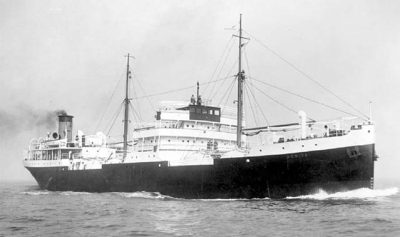
The shipment of the two main LPG gases, propane and butane, has been a vital part of world energy supplies for almost the last ninety years. In 1927, Jean-Baptiste Auguste Kessler junior, a director of Royal Dutch Shell, made the decision to transport propane and butane gases from petroleum refineries. Propane and butane, or a mixture of these two gases, are inherent within crude oil at oilfields, and are produced by natural gas separation or crude oil refining. In the early days at oilfields, they were often flared off because of the difficulty of transportation. It is essential to remove propane and butane during the refining of crude oil, because if left in refined petrol they cause evaporation of stored petrol. They can be transported on land by pipeline, but for sea transport they must be liquefied to reduce their volume by 99.8%. Shell then ordered that year the first LPG tanker in the world from the Hebburn yard of Hawthorn, Leslie & Co. Ltd., Agnita of 4,700 dwt, which was launched on 20th November 1930 and completed in March 1931 for ‘La Corona’ Petroleum Maats of Holland, the British Shell fleet being the Anglo-Saxon Petroleum Co. Ltd. of London.
Agnita used vertical pressurised cylindrical tanks in order to simultaneously carry any two of three different cargoes, gas oil, sulphuric acid and propane, with the gas oil carried inside or outside the cylinders, the acid or propane would be inside. The domed tops of her cylinders protruded well above her weather deck on her normal voyage after loading sulphuric acid at Rotterdam in her cylinders and she proceeded to Curacao to discharge the acid, and load gas oil both inside and outside of her cylindrical tanks. Alternatively, gas oil might only be loaded outside of the cylinders and in this case she would proceed to Port Arthur in Texas to load propane into her cylindrical tanks and proceed to Europe with both the propane and gas oil as cargo. She had a service speed of 11.5 knots from a single eight cylinder oil engine of 2,350 bhp, and her hull had dimensions of length 306 feet and beam of fifty feet. Three years later in 1934, a Dutch Shell ‘Triple Twelve’ tanker, Megara of 12,600 dwt, was also converted to carry propane.
Agnita had an exciting time in World War II, and was the first Shell tanker to be attacked by air on 17th December 1939. She was inward bound from Cardiff en route for Rotterdam to load sulphuric acid and ten miles south of Hastings when bombed and strafed three times by a Heinkel 111 bomber. She was badly shaken after being lifted bodily by the bombs with damage to her engine room and radio transmitter. She made for Southampton for repairs and continued in service for another fifteen months until sunk just north of the equator in position 2.30 North, 25.0 West while on passage from Freetown to Caripito in Venezuela. She had been captured by the raider Kormoran and her 38 crew and one gunner were taken prisoner. Megara continued carrying propane throughout the war until she became a depot ship at Gibraltar in 1950.
Post-War LPG Carriers and Trading

Agnita and Megara were designed to carry LPG in pressure vessels at ambient temperature, but in 1959 semi-pressurised LPG carriers entered the market and LPG was then transported under lower pressure, which was made possible by lowering the temperature of the cargo. Four years later in 1963, fully refrigerated tanks for LPG were in service, carrying liquefied cargo at atmospheric pressure. Liquefied gases are divided into groups based on their boiling point, chemical bindings, toxicity and flammability. This has led to different types of LPG carriers and cargo containment systems.
The design, construction and operation of liquefied gas carriers are governed by SOLAS regulations, including the International Code for the construction and equipment of ships carrying liquefied gases in bulk (IGC Code). These contain requirements for surveys to be carried out within stipulated periods so that the ship is maintained in a condition fit to carry the cargoes intended. The IMO (International Maritime Organisation) divides LPG gas carriers into the following categories:-
Butane and Propane carriers
Ethylene, Propylene, Butadiene carriers
Ammonia carriers
Chlorine carriers
Chemical gas carriers
Propane was shipped internationally on the decks of cargo-liners in the late 1940s in ten tonne pressurised skid tanks of the fleet of Oivind Lorentzen of Oslo trading between the U.S. Gulf and Brazil. The United States was self sufficient in propane and butane, but Europe, South America, South Africa and Japan had to import their supplies for their domestic and commercial heating and energy uses and as feedstocks for their chemical industries. Warren Petroleum of the U.S.A. in 1947 converted a dry cargo war standard ‘C1’ type at the Bethlehem Steel yard at Beaumont (Texas). Cape Diamond was fitted with 68 vertically installed tanks in five holds and renamed Natalie O. Warren of 6,050 cubic metres capacity. She entered service as an LPG carrier in November 1947 on a trade from Houston to New York for Warren Petroleum Corporation until sold in 1961 to Oivind Lorentzen for Curacao to West Indies ports and the Eastern Seaboard of the U.S.A. trade.

and from 1959 until 1962 she sailed as Sao Paulo, before reverting to Esso Sao Paulo. On 13th May 1967 she arrived at Kaohsiug to be broken up. Photo: Fotoflite
In 1949, Oivind Lorentzen converted a ship with 29 vertical and two horizontal gas tanks and renamed her Ultragaz of 3,000 cubic metres capacity and 3,670 dwt. The tanks were made of thick steel in order to withstand working pressures of up to 17 kg per square centimetre. She was the former cargo ship Rio Novo built by Sir John Priestman at Sunderland in 1937, and was renamed Gasbras Sul in 1955 and Mundogas Sul in 1961. She was followed by the ‘Liberty’ type Thomas F. Bayard in 1952, converted at Kiel with rows of cylindrical tanks along the decks of her forward and aft holds. She arrived at Rio de Janeiro in August 1952 with her first LPG cargo as Ultragas Sao Paulo. The converted ‘C1’ type Cape Nun followed from Kiel in 1953 as Gasbras Norte of 8,000 dwt.
Esso began converting standard war built ‘T2’ tankers between 1950 and 1954 for combined LPG and oil products carriage. Esso Sao Paulo had eight vertical pressure tanks installed in her centre tanks, followed by conversions of her sisters Esso El Salvador and Esso Brazil for the Brazilian LPG trade. Esso Puerto Rico was a conventional 32,918 dwt tanker built at Monfalcone in 1959 but she was converted to carry 7,000 tonnes of LPG plus a much larger quantity of oil. Esso completed the largest LPG vessel in the world in 1977, Esso Westernport of 101,000 cubic metres capacity and 67,840 dwt, and she was used on the Persian Gulf to Japan run.
Shell also had a butane carrier of 985 dwt completed at the La Ciotat yard in 1955 as Butagaz with cylindrical tanks. Shell continued its LPG pioneering activities with the conversion of their Dutch flag Iridina of 18,000 dwt to carry butane and butadiene LPG at moderately cool temperatures of – 5 degrees Centigrade. She had been built at La Ciotat in 1955, and was followed in 1960 by the conversion at the North Shields yard of Smith’s Dock Co. Ltd. of the ‘mosquito’ tanker Gyrotoma of 8,000 dwt. She had been built by the North Sands yard of J. L. Thompson & Sons Ltd. in 1948 and after conversion was renamed Shell Murachi under the Venezuelan flag for coastal Venezuelan trading from Punta Cardon. She then carried 1,643 cubic metres of propane in cylindrical tanks in her centre cargo tanks, as well as 10,300 cubic metres of oil. Shell later ordered two large LPG tankers from the Belfast yard of Harland & Wolff Ltd., completed as Isocardia and Isomeria in 1982 of 47,990 dwt and 59,725 cubic metres. They were considered to be the most complex merchant ships ever built at Belfast with their five large gas tanks and intricate piping.
Shell also later invented an internal gas tank insulation system that was different from all other tank insulation systems, whereby polyurethane foam is sprayed directly onto the flush inner plating of a gas tank, thus serving both to contain and insulate the liquid gas. The large gas tanker Pioneer Louise of 55,845 dwt was completed by IHI of Japan in 1976 using this tank insulation system for Goldcup Tankers of Liberia and placed on charter to Shell.
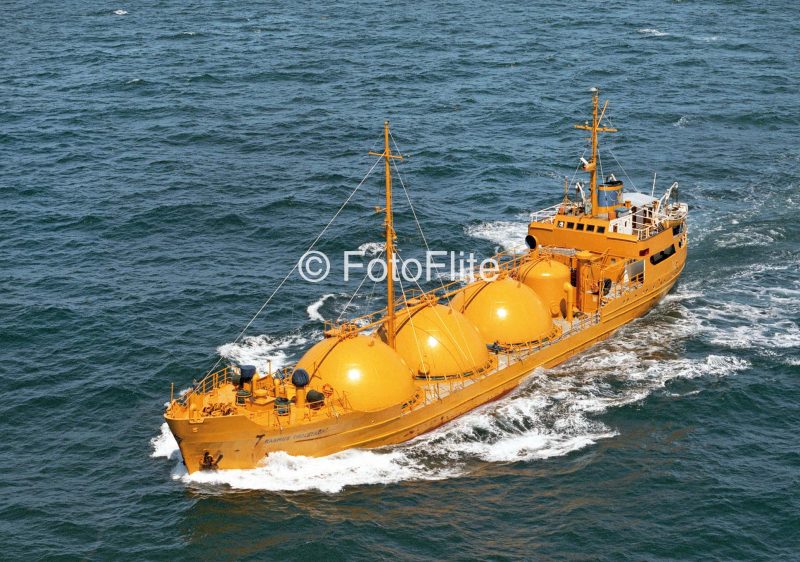
In 1953, the first purpose built LPG pressurised tanker was completed in Sweden as Rasmus Tholstrup for Danish company Kosangas of 600 cubic metres capacity with a dozen vertical pressure tanks. She was followed by the similar sized Sorine Tholstrup in 1954, Signe Tholstrup in 1957 and Eva Tholstrup in 1958. By the late 1950s, there were several small pressurised LPG coastal tankers operating in the range from 200 to 1,000 cubic metres capacity and trading in Europe e.g. Agipgas Primera of 600 dwt, Agipgas Seconda of 744 dwt, and Agipgas Terza of 950 dwt for E.N.I. (Italian State Gas and Oil), the latter ship with 19 gas tanks for the transport of liquid gas from Libya and Egypt. Hydrotank A/S of Oslo had three sisters of 2,400 dwt in service in 1950 for the carriage of liquid ammonia in cylindrical tanks as Haugvik, Heroya and Hydro. In 1956, Tropigas of Miami, which until 1954 had been the marketing arm of Esso in the Caribbean, ordered Marian P. Billups of 2,000 cubic metres and in 1958 ordered Fred H. Billups of 2,850 cubic metres. This upper limit of 2,850 cubic metres was considered efficient for the time considering the thickness of the steel tanks.
The solution for larger LPG cargoes lay in refrigeration, by cooling the cargo the pressure can be reduced and there is a consequent reduction in the thickness and weight of the cargo tanks. Bibby Line built large refrigerated ships including Wiltshire of 15,495 cubic metres in 1968, Lincolnshire of 31,296 cubic metres in 1972, sisters Hampshire and Devonshire of 52,648 cubic metres in 1974, the VLGC Staffordshire of 75,970 cubic metres in 1977, Cheshire of 28,000 cubic metres in 1989, Oxfordshire of 34,745 cubic metres in 1997, and Lancashire of 35,197 cubic metres in 2002. Bergesen and other Norwegian shipowners, and Maersk Line of Denmark also built up large deep sea LPG refrigerated carrier fleets. The Unigas consortium of Germany of George Gibson of Leith, Sloman Neptun, Olaf Pedersen and Schulte and Bruns built up large coastal LPG pressurised carrier fleets. Their bright orange and blue funnels with a central blue ‘U’ on an orange band were seen in all European ports. However, it was three pioneering independent LPG traders and operators of LPG carriers that had opened up the world LPG markets from 1956. These three were Gazocean of France, Mundogas S.A. in the Caribbean and Latin America, and Multinational Gas of the U.S.A., and which will be described in detail.
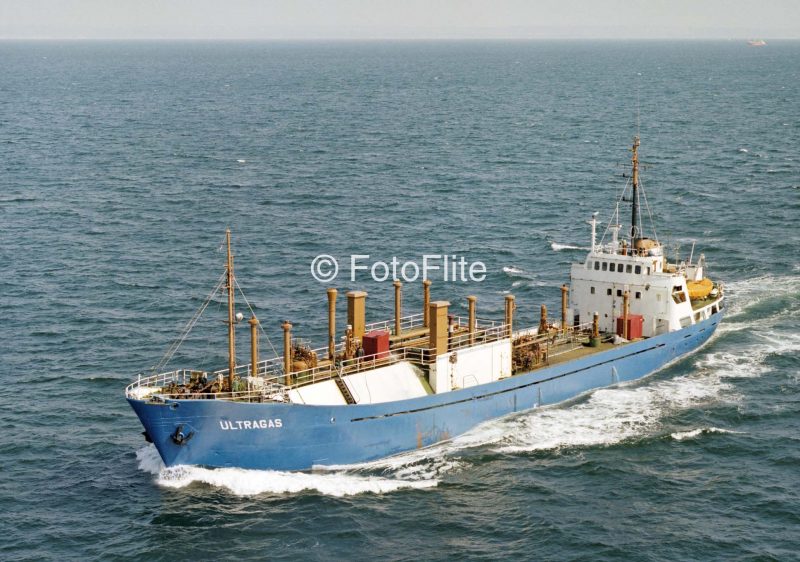
Gazocean
Rene Boudet began his LPG gas carrier career in Italy in 1956 by forming the shipping company Oceangas to ship LPG to Italy, and converted a dry cargo coaster into a small pressurised ship called Gay Lussac of 434 dwt and 500 cubic metres capacity. The following year a charter opportunity with Shell Maritime of France enabled him to set up Gazocean Armement in Paris. The converted dry cargo to LPG sisters Loex and Marcelin Berthelot in 1958 of 1,000 cubic metres capacity traded with refinery LPG out of the Mediterranean to Northern French ports. In the mid 1960s, Gazocean expanded with interests in Chile and Argentina, and shortly afterwards in 1968 in Brazil with a contract from Petrobras. Gazocean was then shipping large quantities of Shell Venezuelan LPG to these South American countries. Part of the secret of the success of Gazocean were the allied consortium members of Houlder Brothers of London, which obtained contracts from Ecuador for supplying LPG into Guayaquil, and also Navigas S.A. of Spain for LPG shipments to Spain.
In 1959, Gazocean completed the first of a series of small semi-refrigerated LPG carriers. This was Descartes of 920 cubic metres capacity from the La Ciotat yard in Southern France. She operated at the reduced working pressure of nine kg/square centimetre, and was followed by the similar sized Arago in 1962, and the membrane tank sisters Monge and Pythagore in 1963. Lavoisier was also completed in 1963 as a larger LPG carrier of 6,200 cubic metres, and Pascal of 6,310 cubic metres followed in 1967 from the La Ciotat yard. Houlder Brothers made an agreement with Gazocean in 1964 for joint operation of the small LPG carrier Avogadro of 920 cubic metres, and the larger Joule of 3,300 dwt and 3,600 cubic metres capacity. Humboldt of 5,165 dwt and 6,247 cubic metres was a near sister of Lavoisier and Pascal, and the trio used semi-refrigerated or fully refrigerated tank designs to achieve further reduction in working pressure of between five and seven kg/square centimetre. An order was placed with a shipbuilder that was well known to Houlders and with previous experience of building LPG carriers. This was Hawthorn, Leslie & Co. Ltd. of Hebburn on Tyne and the yard completed Clerk-Maxwell of 11,759 cubic metres capacity in 1966 with a dwt of 9,067 tonnes. The cargo coolant temperature was controlled within a large white painted housing in deck in front of the bridge connected via much visible piping to the liquid cargo. A small goalpost mast fitted on top of her bridge completed the appearance of the first large deep sea LPG carrier to be built in Britain.
Clerk-Maxwell was registered under the Nile Steamship Co. Ltd. of London but was later transferred to the Houlder company of Ocean Gas Transport Co. Ltd. This company was formed jointly with Gazocean, and the French company name was painted in large white letters on the hulls of the jointly owned Houlder LPG ships. Larger Houlder LPG ships followed, including Faraday of 24,750 dwt and 31,215 cubic metres in 1971, Cavendish of 29,500 dwt and 40,200 cubic metres in 1971, Lord Kelvin of 28,400 dwt and 31,243 cubic metres in 1978, as well as the purchased Joule (2) of 11,355 dwt and 11,071 cubic metres in 1973. Ocean Gas Transport Co. Ltd. ships had double markings on their funnels, with the Houlder Maltese cross side by side with the Gazocean dolphin breathing flame on a blue disc. Later gas tankers had funnels too narrow for both devices to be displayed side by side, and so the the dolphin was placed above the cross.
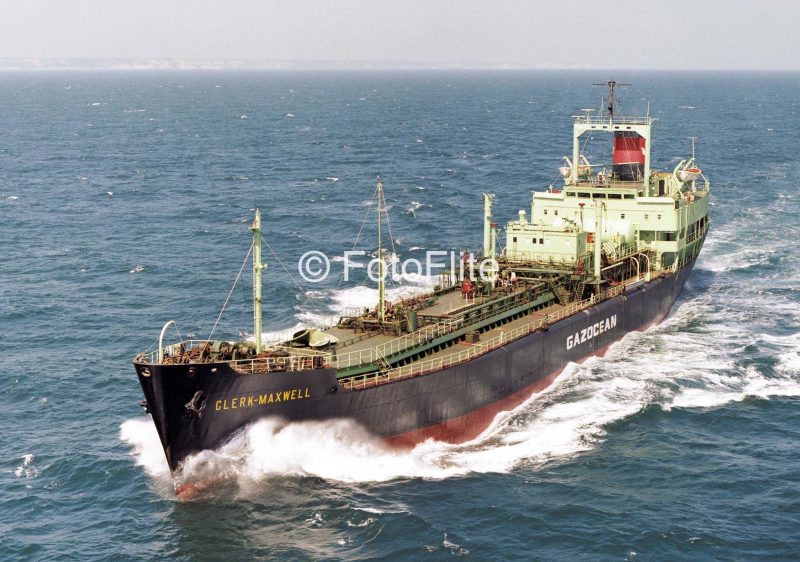
The Spanish affiliate of Gazocean was Navigas S.A. and they operated the LPG carriers Newton and Vinci completed in 1963/64. Gazocean were important LPG traders and were later reorganised as Technigaz to operate in a rapidly changing environment with great seasonal LPG demands. Gazocean built vessels with flexibility to trade worldwide with up to six different liquid gas products in each LPG carrier e.g. anhydrous ammonia at -34 degrees centigrade, butadiene at -5 degrees, vinyl chloride monomer (VCM) at -14 degrees, as well as butane at -1 degree and propane at -43 degrees centigrade. Sizes of LPG tankers began to increase, with the first LPG carrier of over 100,000 cubic metres capacity completed in 1970.
In the 1970s, Gazocean began to ship LPG out of Libya and Algeria into two French import terminals. In 1976, the Gazocean pool was one of a dozen fully refrigerated deep sea LPG carriers plus a further twenty coastal LPG pressurised ships carrying a total of 2.4 million tonnes of LPG per year. Rene Boudet departed from Gazocean in 1978 to form a new LPG trading company called Geogas, and Gazocean began chartering LPG ships rather than having newbuildings e.g. Tycho Brahe of 15,000 cubic metres from the Hamburg shipowner Friedrich A. Detjen built at the Papenburg yard of Jos L. Meyer in 1982.
Gazocean was still active as an LPG trader in 1983 but had retrenched its business by 1985. The LPG shipping pool was restructured into a looser pool called General Gas Carriers, which continued for a further few years until it and Gazocean was finally dissolved in the late 1980s. The company name was sold on and operates five large LNG carriers today as a joint venture between GDF Suez and NYK of Japan after a merger with Gaz de France, The five very large LNG methane carriers are of up to 154,500 cubic metres capacity and are named Provalys, Gaselys, Grace Cosmoa, Grace Acadia and GDF Suez Global Energy, operating from a headquarters in Marseille.
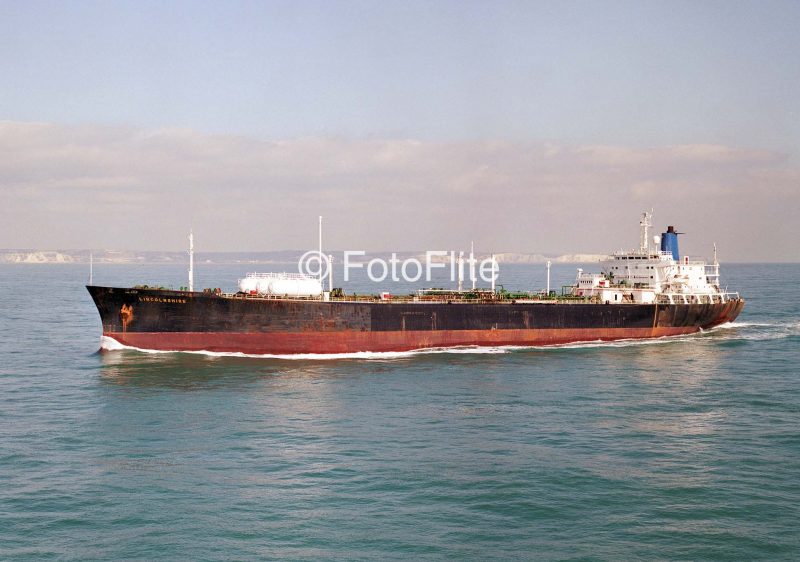
Mundogas S.A.
Mundogas or ‘World Gas’ began LPG trading in 1956 to supply LPG from Socony Vacuum/Mobil from the U.S. Gulf to Ultragas and Panaversal of Brazil in LPG carriers owned by Oivind Lorentzen of Oslo. Natalie O. Warren was purchased in 1961 from Warren Petroleum Corporation and renamed Mundogas West for the Curacao to Caribbean ports and South America trade. Three converted ships were also operated on charter from Oivind Lorentzen as Ultragas, Ultragas Sao Paulo and Gasbras Norte of 8,000 dwt, the former ‘C1’ type Cape Nun. The latter ship was converted into an LPG carrier at Kiel in 1953 and renamed Gasbras Norte and became Mundogas Norte in 1961 for the next ten years until her engines were removed to become an LPG storage ship. They carried LPG from Houston to Rio de Janeiro and Santos, and later Lorentzen pressurised LPG carriers were built to operate on time charter to Mundogas with a wide variety of LPG cargoes.

Mundogas then invested in its own fleet of fully refrigerated LPG ships operating from the Venezuelan oilfields to Brazil and Argentina supplying 800,000 tonnes per year of LPG to those two countries. The 1970 Mundogas fleet was :-
| Mundogas Brasilia | 7,700 m3 | built 1961 |
| Monomer Venture | 5,700 m3 | built 1962 |
| Mundogas Atlantic | 8,500 m3 | built 1969 |
| Mundogas Rio | 19,500 m3 | built 1967 |
| Mundogas Europe | 22,000 m3 | built 1968 |
| Mundogas Pacific | 22,000 m3 | built 1969 |
Mundogas America of 38,928 dwt, the former Garmula of P. & O. was part of the fleet from 1972 as P. & O. had acquired the Mundogas shares of Mobil and Ultragas. The ten P. & O. LPG carriers of Gazana, Gambada, Garmula, Gambhira, Garbeta, Gandara, Galconda, Galpara and Garala operated on charter to Mundogas and other LPG traders. The first pair of this P. & O. fleet had been built at the Birkenhead yard of Cammell, Laird but after late deliveries and a crisis at the yard, the next four ships were switched to a Norwegian yard. Gazana followed from the Hebburn yard of Swan Hunter Shipbuilders Ltd. in 1976 to trade either from the U.S. Gulf to South America or from Mina al Ahmadi to Fos near Marseille. The first Mundogas LPG supply contract from the Persian Gulf was obtained in 1974, and Mundogas was also selling LPG into Europe as a joint venture with Unigas from 1980, and also into Japan from the U.S. Gulf.
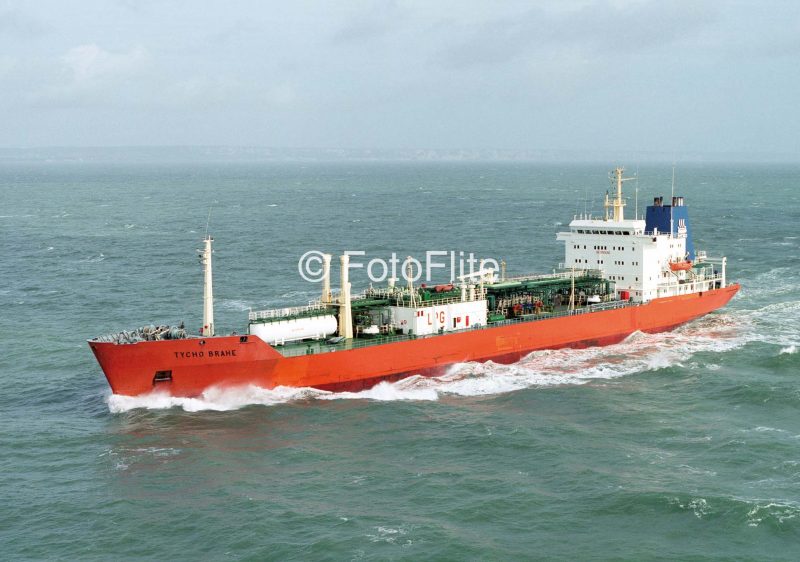
Mundogas had pioneered the use of reheaters in LPG shipboard operations, whereby ‘cold’ or refrigerated LPG could be discharged into ‘warm’ or pressurised shoreside tanks. However, by 1988 Mundogas was operating only four LPG carriers with the large Mundogas America being used as a floating storage vessel at Guayaquil in Ecuador from 28th November 1988. Mundogas Orinoco of 50,584 dwt and 74,578 cubic metres was purchased in 1988 to operate from the Persian Gulf, and was later joined by the sisters Mundogas Atlantic (2) and Mundogas Europe (2) of 22,500 cubic metres capacity. A decade later in 1998 the Mundogas name and LPG business interests were sold to Hong Kong owners.
Multinational Gas
Multinational Gas was formed in 1971 by three partners, namely Phillips Petroleum of the U.S.A., Saga Group of France, and Bridgestone Liquefied Gas of Japan. The objective was to trade LPG internationally and this was achieved with volumes of over one million tonnes per year from the Venezuelan oil majors, and Sonatrach in Algeria and Occidental Oil in Libya, as well as suppliers in the Persian Gulf such as Texaco and Chevron. By 1975, Multinational was operating eight fully refrigerated LPG carriers from these supply areas to Spain, Japan, Taiwan and Argentina. These gas carriers were :-
| Trina Multina | 18,400 m3 | built 1968 |
| Norfolk Multina | 25,100 m3 | built 1964 |
| Amy Multina | 26,500 m3 | built 1969 |
| Bridgestone Multina | 28,800 m3 | built 1962 |
| Kenai Multina (LNG) | 35,500 m3 | built 1975 |
| Hoegh Multina | 52,000 m3 | built 1971 |
| Malmros Multina | 53,400 m3 | built 1974 |
| Providence Multina | 53,400 m3 | built 1973 |
Several Leif Hoegh LPG carriers were also chartered in by 1977, but trading losses began to mount up coupled with huge payments for charter and newbuilding vessels and precipitated a cash flow crisis due to overtrading. Providence Multina was laid up at Marseille from November 1977, and by early 1978 only two Multinational LPG carriers were trading. This pair was sold off in 1978, and after a short life of only seven years Multinational Gas was consigned to maritime and LPG history.
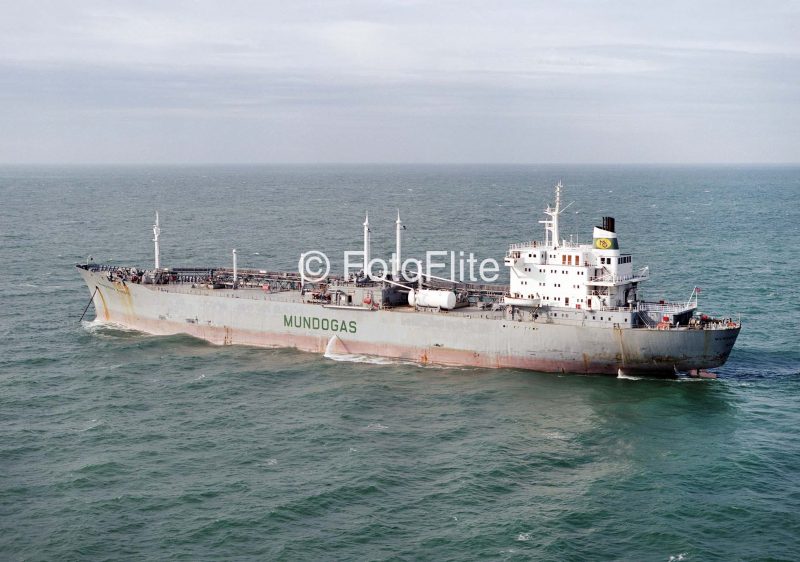
LPG Trade in the 1980s and 1990s
LPG sales in Europe increased to 35 million tonnes in 1985, supplied by production plants in the Middle East, Indonesia, Algeria, U.S.A., Venezuela and in countries around the North Sea. This scale of sales and production compared well with only 300,000 tonnes in 1950, 3 million tonnes in 1960, and 11 million tonnes in Europe in 1970. However, a number of LPG gas tankers were laid up in 1980, even ethylene carriers carrying their cargo at -104 degrees Centigrade were finding it tough going due to the OPEC fuel price rises of the mid 1970s. The LPG market had seemed bright only a few years beforehand when many LPG carriers were delivered. LPG international movements to the U.S.A., Western Europe and Japan then grew rapidly through the 1980s, with LPG production worldwide estimated at 139 million tonnes in 1990, with LPG worldwide consumption at 133 million tonnes. This excluded petrol butanes, propylene, propane and butane used for petrochemical production, and several olefins including butadiene.
The average size of a LPG gas carrier in 1990 was around 12,000 cubic metres capacity with considerable flexibility as to routes and quantities carried on contracts of affreightment, time charters or ‘spot’ trading. The size of the worldwide LPG fleet on the last day of 1990 was 754 vessels of 9.576 million cubic metres capacity distributed over the following vessel sizes:-
| 60,000 m3 and over | 66 ships of 5.1 million m3 capacity |
| 20,000-60,000 m3 | 60 ships of 2.2 million m3 capacity |
| 5,000-20,000 m3 | 133 ships of 1.3 million m3 capacity |
| Less than 5,000 m3 | 495 ships of 0.9 million m3 capacity |
Source: Clarkson Research Studies Ltd.
On the last day of 1999, there were around 900 LPG carriers in service, of which eighty had ‘Gas’ or ‘Gaz’ prefixes to their names. The Very Large LPG Carriers (VLGC) included six of 78,800 cubic metres capacity owned by the Kuwait Oil Tanker Company in Gas Al Ahmadi, Gas Al Burgan, Gas Al Kuwait, Gas Al Minagish, Gas Al Gurain and Gas Al Mutlaa. Six of the same size were owned by Japanese shipowners in Gas Aries, Gas Diana, Gas Gemini, Gas Leo, Gas Libra and Gas Scorpio. Seven of that size were owned by Naftomar Shipping and Trading of Athens in Gas Atlantic, Gas Concord, Gas Creation, Gas Imperial, Gas Marmara, Gas Poem and Gas Suez, while those of that size of Korean and other nationality shipowners included Gas Bauhinia, Gas Miracle, Gas Roman, Gas Prime, Gas Rising Sun, and Gas Vision.
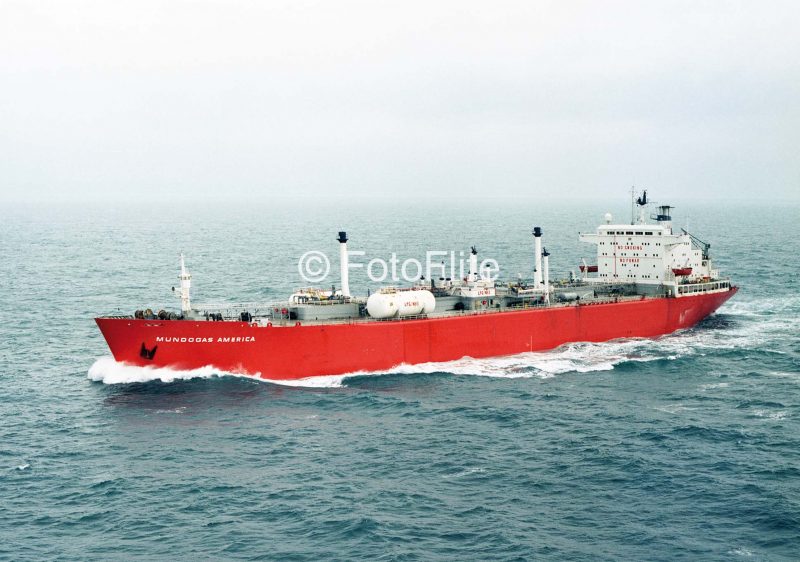
Current LPG Fleets
There are a large number of liquid gas carrier companies operating in the following size segments:-
VERY LARGE LPG CARRIERS (VLGC) are considered to be over 60,000 cubic metres capacity, and use fully refrigerated tanks and account for around 60% of the volume of LPG carried by sea. Bergesen Worldwide (BW Group) operate a large number of VLGCs on long haul routes from the Middle East to Japan, and have 8.2% of the world LPG fleet by capacity. These ships are always fully refrigerated LPG carriers, and include BW Austria, BW Borg, BW Boss, BW Broker, BW Captain, BW Danuta, BW Havfrost, BW Havsol, BW Helios, BW Hermes, BW Hedda, BW Helda, BW Hugin, BW Havis, BW Lord, BW Odin, BW Prince, BW Princess, BW Sombeke, BW Summit and BW Trader. Other VLGC vessels are owned by Exmar of Belgium, Geogas Trading of Geneva, Naftomar Shipping and Trading of Athens, NYK of Japan, Royal Dutch Shell, British Petroleum, Kuwait Oil Tanker Company, Maersk Line, National Shipping Company of Saudi Arabia, Zodiac Maritime and others, and operate in grouped pools. Qatargas has a big fleet of thirty LPG and LNG carriers with some managed by Stasco (Shell), and Polarpacific Gmbh of Germany operates two of this size in Polar and Pacific. Selandia Gas of Singapore manage a fleet of 25 vessels for Danish and other owners including Gas Arctic, Gas Chios, Gas Ice, Gas Icon, and Gas Shanghai. Solvang ASA of Oslo, part of the Clipper Group, has a big fleet of fourteen VLGCs plus seven smaller ones in the 12,000 to 17,000 cubic metres range, all with the prefix ‘Clipper’ to their names.
MEDIUM SIZE LPG CARRIERS are in the range of 20,000 to 60,000 cubic metres capacity and account for one quarter by volume of all LPG carried by sea. Most of these ships are fully refrigerated LPG carriers with only a few semi-refrigerated vessels. There are 150 vessels in this group with ‘Gas’ or ‘Gaz’ prefixes to their names. Navigator Gas of London, formed in 2000, operates 20 vessels with ‘Navigator’ prefixes to their names of around 20,000 cubic metres, with another 10 on order for delivery by March 2017 in the range from 22,000 to 35,000 cubic metres capacity.
SHORT HAUL LPG CARRIERS are in the range of 5,000 to 20,000 cubic metres capacity and account for one tenth by volume of all LPG carried by sea. One third of their number are fully refrigerated vessels with two thirds of their number semi-refrigerated. They include vessels owned by PT Pertamina and PT Berlian of Indonesia, Transgas of Peru, Gas Tankers of Vietnam, and the fleet of twenty LPG carriers owned by Norgas (Skaugen) A/S of Norway with ‘Norgas’ prefixes to their names. Norwegian Gas Carriers was established in 1982 as the chartering and marketing entity of a co-operative pool of twenty LPG carriers belonging to five separate owners. Skaugen became the largest shareholder of Norgas, and today also has five LPG barges operating on the Yangtze in a joint venture with the Hubei Tianfa Group of China. A Greek company with the imaginative and paradisal name of Paradise Gas Tankers has a fleet of five ships around 7,500 cubic metres capacity including two newbuildings. Prime Marine of Athens manage eight ships in this size range in Gas Cobia, Gas Dorado, Gas Grouper, Gas Mahi, Gas Manta, Gas Pacu, Gas Puffer and Gas Snapper with fish names. Anthony Veder BV of Rotterdam has a big fleet of thirty ethylene carriers in this size range, most with ‘Coral’ prefixes to their names. Other companies include Benelux Overseas, Chemikalien Seetransport, Evergas, Gaschem, Othello Shipping, SNTM Hyproc, and Ultragas.
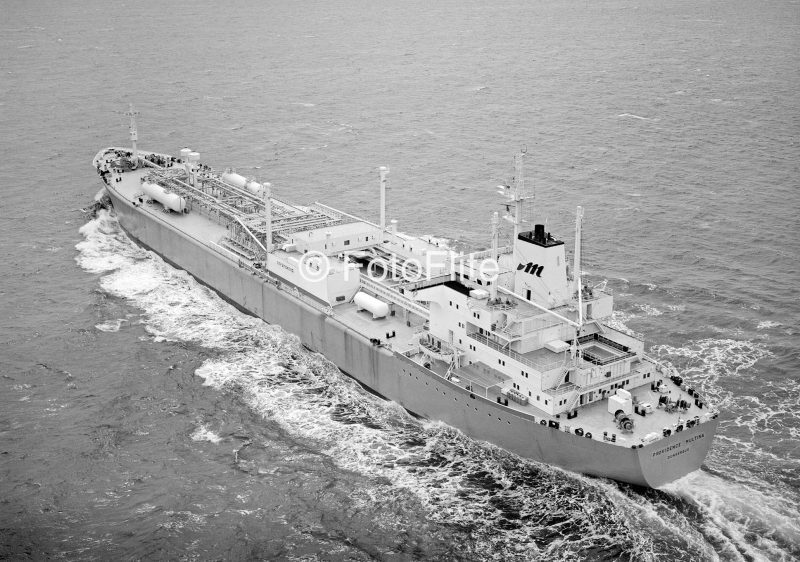
COASTAL LPG CARRIERS are of a size below 5,000 cubic metres capacity and account for 5% by volume of all LPG carried by sea. They are mostly fully pressurised vessels with some semi-refrigerated. They include vessels owned by the Schulte Group of Germany with ‘Lady’, ‘Sunny’ or ‘Happy’ as prefixes to their names, the Unigas consortium, Hartmann Gmbh of Leer in Germany with ‘Gaschem’ or ‘Frisia’ prefixes to their names, Stealthgas Inc. of Athens, Epic Gas Tankers of Singapore, and Eitzen Gas of Copenhagen with ‘Sigas’ prefixes to their names. Lauritzen Kosan A/S of Copenhagen operate 25 ships of this size, all with girl’s names with the suffix ‘Kosan’ e.g. Helena Kosan. B Gas of Valetta operate a small fleet of pressurised LPGs including B Gas Ettrick, B Gas Lanrick, B Gas Lotta and B Gas Lydia. Other companies include Anadoluitari Tankercilik of Turkey, Chemgas, Iino Kaiun Gas Transport, Iwasaki Kisen, Nanjing Gas Tankers, Nippon Gas, Petredec Gas, and Tabuchi Kaiun. Star Gas of Tokyo operate twenty pressurised ships in this range e.g. Gas Hawk and Gas Redsea, while Oceangas Services Australia (Pty) Ltd. operate three ships of this size in Astrid, Maea and Victoire around the southern, eastern and western coasts of Australia and across the Tasman Sea to New Zealand.
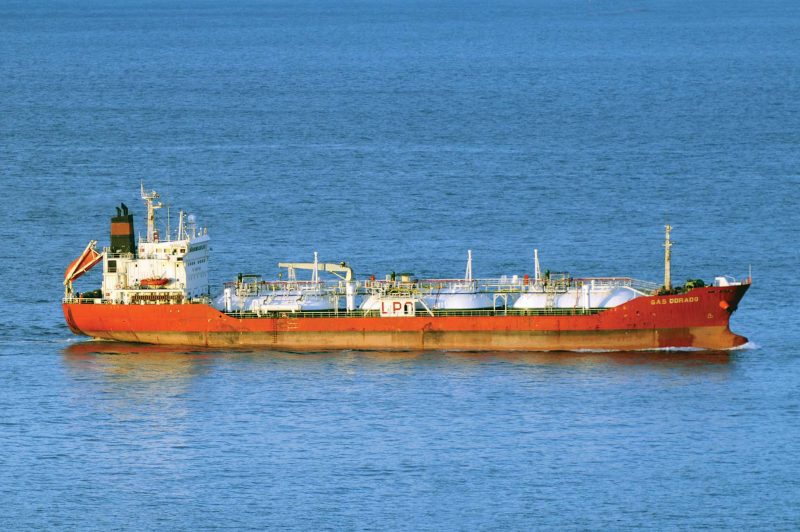
Postscript
There are 1,250 LPG carriers in service worldwide today, including 140 VLGCs of up to 85,000 cubic metres capacity. VLGC ‘spot’ rates in 2015 were running at their highest level for over two years, and soon exceeded within a few months the previous highest rates of $81.64 per metric tonne set in 2008 for long haul routes. An increase in production by shale oil and gas methods in the U.S.A. and Canada has helped to boost this surge in LPG activity. A new entrant to the VLGC market in 2013 was Dorian Hellas LPG, although the owning Hadjipateras family of Greece purchased two small pressurised LPG vessels in 2002. A large fleet of 22 VLGCs was owned in early 2016, with eighteen of these forming a new ‘C’ class of 84,000 cubic metres capacity, and named Corvette, Cougar, Concord, Cobra, Continental, Constitution, Corsair, Commodore, Cresques, Constellation, Cheyenne, Cratis, Clermont, Chapparal, Commander, Copernicus, Challenger, and Caravel. The high LPG freight rates now being obtained will attract other new entrants to the gas field, as well as expand the fleets of many existing players.
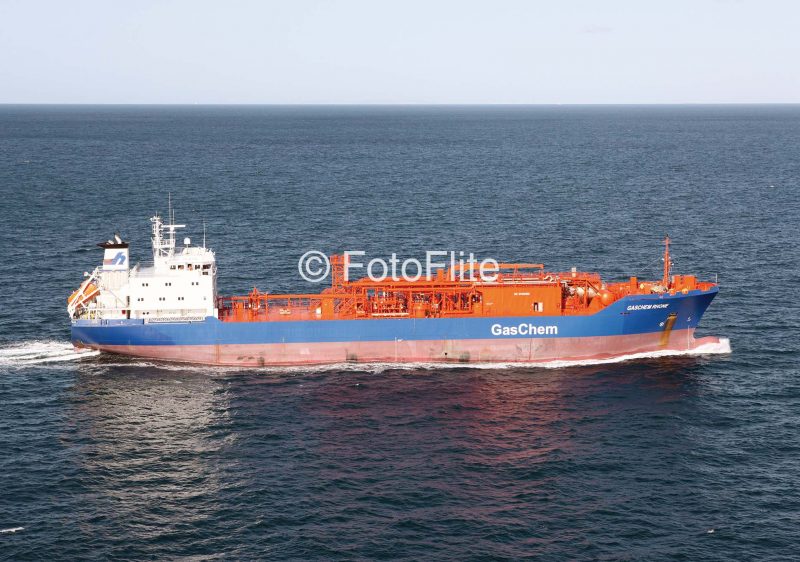
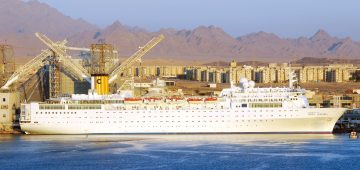
Comments
Sorry, comments are closed for this item